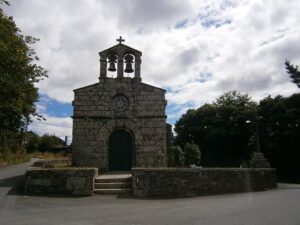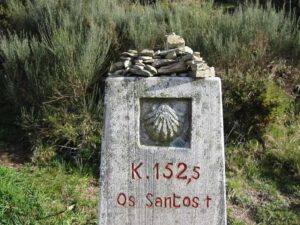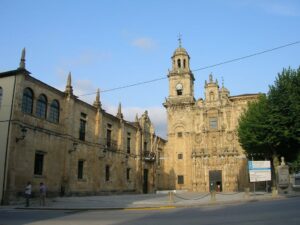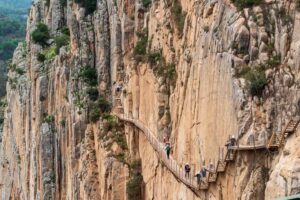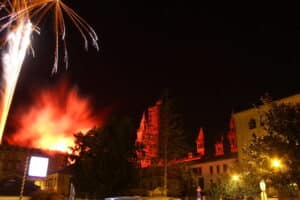
Amidst green mountains and age-old paths, the hórreos emerge silently—enigmatic wood and stone structures that hold secrets of the past and scents of the present. To many pilgrims of the Camino de Santiago, their image is as iconic as the scallop shells or the yellow arrows.
But, what are they really? Why do they appear in so many villages in northern Spain? This article invites you to discover their history, their connection to the Camino de Santiago, and why you should include them in your next itinerary.
If you love tradition, rural architecture, and authentic destinations, the hórreos have much to tell.
Índice de contenidos
History of the hórreos: guardians of grain and time
The origin of the hórreos dates back to pre-Roman times, although their most well-known development is situated in the Middle Ages. These are traditional constructions designed to store grain and other agricultural products, keeping them dry and safe from rodents and weather conditions.
Their elevated structure, supported on pillars (pegollos), with horizontal slabs that prevent the passage of animals, reflects a practical solution that has endured for centuries.
The oldest written traces appear in medieval documents from Galicia and Asturias. However, archaeological studies suggest that their predecessors might have existed even since the castro culture.
Over time, the typology adapted to each region: in Galicia, stone and wood hórreos with gable roofs predominate, while in Asturias, paneras (larger and with four-pitched roofs) also developed.
Beyond their economic function, they acquired a symbolic dimension: they were a sign of family prosperity, heritage, cultural identity, and, in many cases, even elements of prestige.
Hórreos along the different routes of the Camino de Santiago
Hórreos are an iconic element of the Galician rural landscape, but not all routes of the Camino de Santiago pass through them equally. Their presence depends on geographical, cultural, and architectural factors that vary according to the chosen itinerary.
For example, on the Camino Ribadeo Santiago, which runs through northern Lugo, they are frequent from the first days, especially in villages like Vilela, Gondán, or San Xusto. They appear next to stone houses, among pastures and forests, forming part of the pilgrim’s daily environment.
In contrast, on the same Northern Way, specifically from Camino de Santiago Bilbao to Santander, the route is more characterized by Basque architecture, farmhouses, and livestock structures. It is not until entering Cantabria and, later, Galicia, that some can begin to be seen.
On the Camino Francés and the Camino Primitivo, already in Galician lands, hórreos have been part of the rural landscape for centuries. They appear next to cobbled paths, in small villages. In places like Palas de Rei, Triacastela, or A Fonsagrada, these elements not only survive: they are still used or preserved as symbols of local identity.
On the Camino Inglés, they also make an appearance, especially in the second half of the route. The proximity to the sea, green valleys, and small Galician villages create the perfect setting to find them at the edge of the path.
Notable hórreos on the Camino de Santiago
Some hórreos have gained fame for their beauty, size, or unique location. If you’re planning the Camino de Santiago journey, here are some of the most interesting ones you can visit during your pilgrimage:
Hórreos of Combarro (Pontevedra)
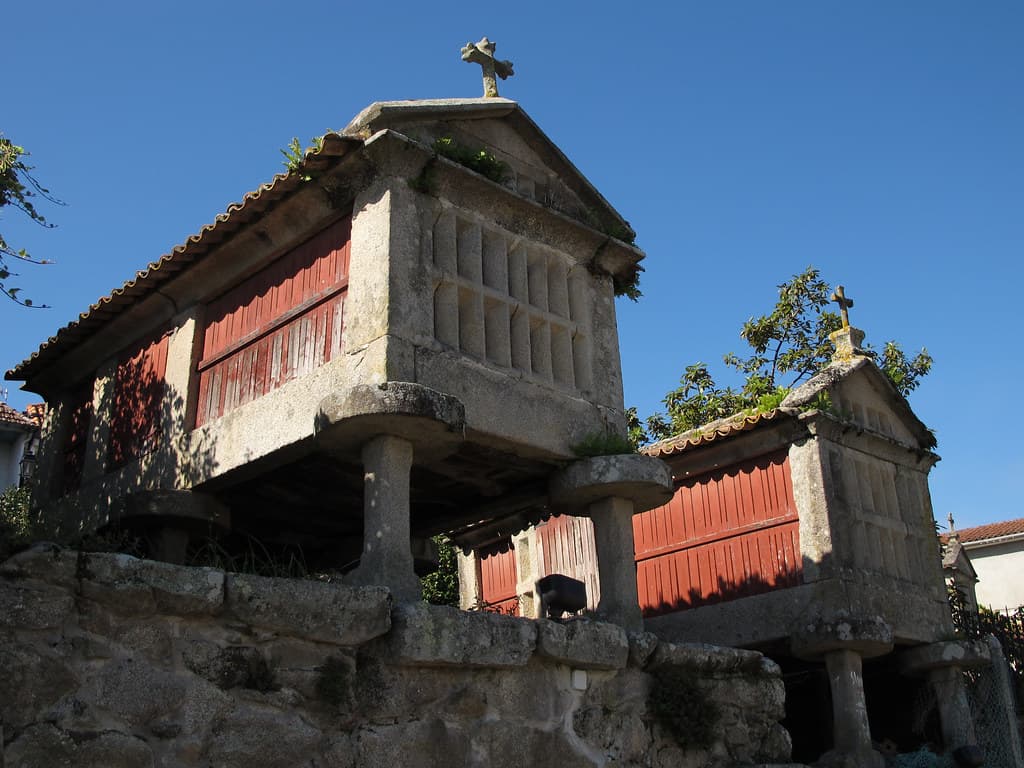
Literally set on the edge of the sea, they are among the most photographed in Galicia. Although they are not directly part of the traditional Camino routes, their proximity to the Camino from Tui to Santiago makes them an essential optional stop.
Carnota Hórreo (A Coruña)
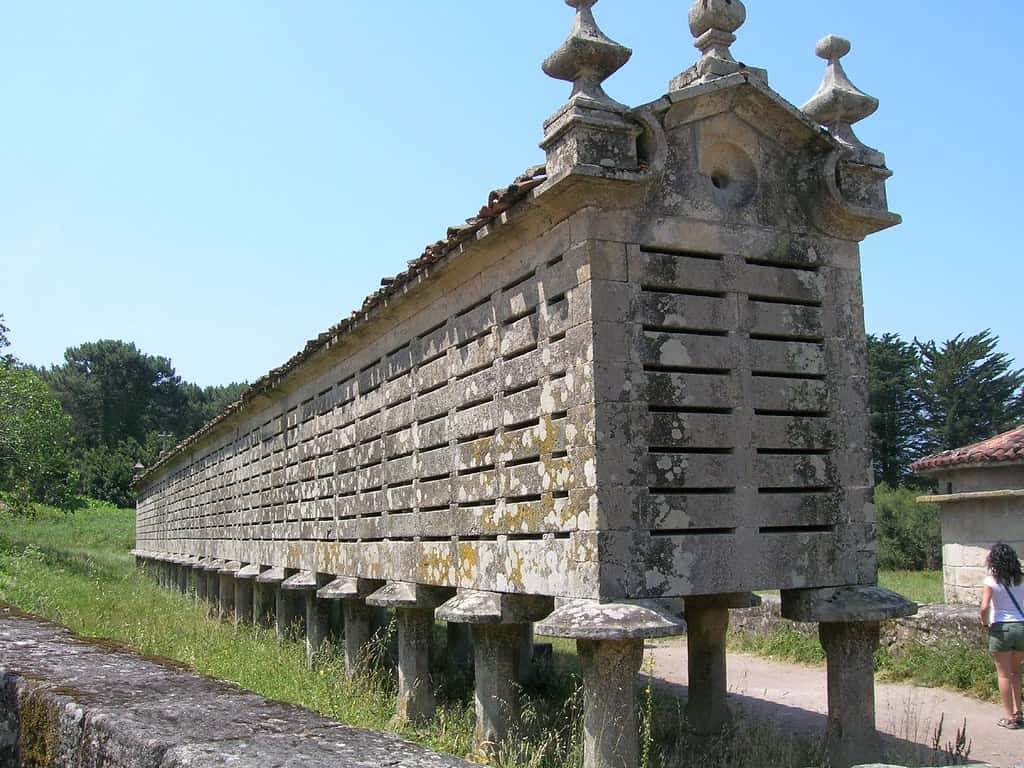
With over 34 metres in length, this is one of the longest in Galicia and all of Spain. Located on the Camino de Fisterra, it stands as a true ethnographic monument. Next to it is a smaller one, forming a unique ensemble.
Piornedo Hórreos (Lugo)
In the heart of the Ancares, Piornedo is a museum village where pallozas and hórreos coexist as they did in ancient times. Although it is off the main Camino route, it is a highly recommended detour for lovers of traditional architecture.
Lira Hórreo (Carnota)
Similar in structure to Carnota’s, but in a quieter location, it also impresses with its length and preservation. Its surroundings are perfect for rest and contemplation after a few days of walking.
Araño Hórreo (Rianxo, A Coruña)
Considered the longest in Galicia, with a length of 37.05 metres, it stands out for its impressive size and excellent state of preservation. You will find it near the Portuguese Way.
A Merca Hórreo Complex (Ourense)
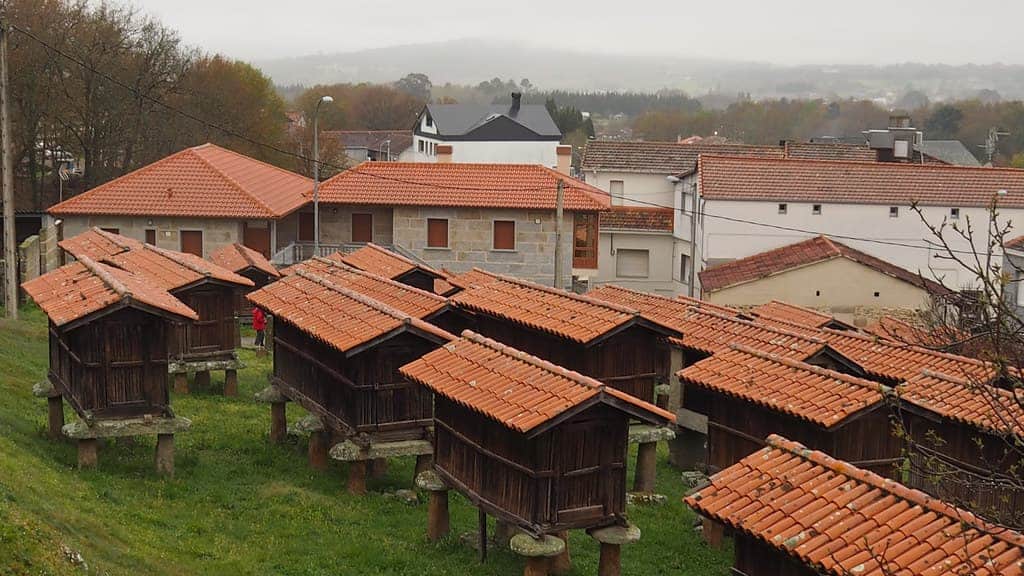
This complex, very close to the Sanabrés Way, consists of 33 wooden units and two mixed ones. It is one of the largest in Galicia and offers a unique insight into traditional Galician architecture.
Santiago de Olveiroa Hórreos (Dumbría, A Coruña)
Located on the Camino de Fisterra, they are part of an ethnographic complex that includes a cruceiro and several traditional buildings.
Accommodation with hórreos: sleeping alongside history
Sleeping near a hórreo, or even in a restored traditional building, can be an unforgettable experience for the pilgrim. Many rural accommodations have embraced the recovery of these as decorative or functional elements, integrating them into gardens, courtyards, and communal spaces.
In areas such as O Cebreiro, Sarria, Arzúa, or Palas de Rei (all on the French Way), it is possible to find rural houses that preserve them in their original state. However, in most cases, they are used as storage, small museums, or viewpoints.
Other accommodations have gone further and converted them into independent rooms, equipped with all comforts but respecting their original structure. This trend, very present in the Rías Baixas and Mariña lucense, combines sustainability, slow tourism, and authenticity.
Recommendations for visiting the hórreos on your trip
If you are planning to explore northern Spain or undertake any of the Camino de Santiago routes, here are some tips to make the most of your hórreo visits:
- Get informed about rural routes: although many are right beside the Camino, others require small detours. Check local maps or ask locals.
- Respect their surroundings: they are protected cultural assets. Do not climb on them, do not touch without permission, and avoid handling their structures.
- Make mindful stops: take a few minutes to observe their architecture, materials, and the symbols carved into their stones or wood. Each has a story to tell.
- Choose accommodations with heritage value: sleeping in a house with a hórreo or visiting an ethnographic museum can greatly enrich your experience.
- Combine tourism with gastronomy: take the opportunity to sample local products linked to their history. Many small producers sell honey, bread, cured meats, or preserves in nearby villages.
Hórreos are not just rural constructions: they are living fragments of northern Spain’s history. They represent folk wisdom, adaptation to the environment, and respect for the agricultural cycle. Visiting one is like stepping back in time, feeling the slow rhythm of the land, and connecting with a way of life that still beats in the villages and hamlets of the north.

